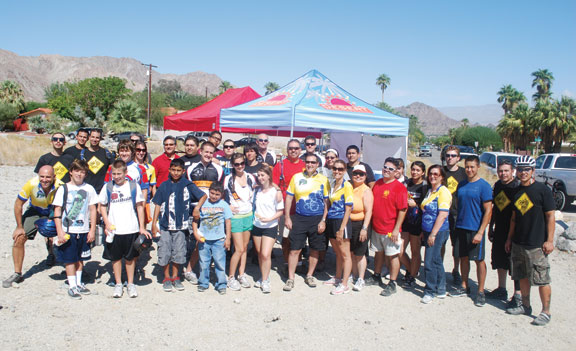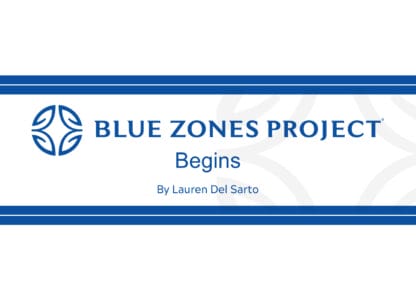
Kaelyn Brock, volleyball player at La Quinta High school, works out under supervision of Michael Butler at Kinetix in Palm Desert.
Parents and coaches come to me frequently asking, “What is the appropriate age for kids to start lifting weights?” I always answer–when they are mentally, emotionally and physically mature enough, that is when they should start. I’ve had boys and girls as young as 11 years old start to lift weights, and on the other hand had to kick a 15-year old out because he was more interested in goofing off then putting effort in to his work out.
A widely-held training myth is that weight lifting stunts growth. There have been many recent studies done by the National Strength and Conditioning Association that found strength training can maximize bone mineral density, reduce injuries and have no negative side effects regarding growth. It is critical that youth work with a competent trainer. In adolescents over the age of 13, the most common soft tissue injury is the lower back and trunk. Researchers suggest this is due to excessive loads, improper technique and lack of coaching.
National studies have been presented over the years stating that weight training, when performed correctly, is the safest sport in terms of injury risk. Sports like football, rugby, and basketball, show high rates of injury. So your child playing a sport is in more danger of getting injured than if he or she would participate in a weightlifting program under the supervision of a well-trained coach.
Training should be fun!
If you are working with a young athlete who has not trained before, keep to the basics. Work on building a solid foundation by doing exercises that will address posture and neuromuscular development. Most kids have issues with posture because of sitting in school all day and carrying heavy backpacks on one shoulder.
Start resistance training when applicable. Studies have shown that resistance training can help prevent non-sports related injuries. Working out consistently (2-3x a week) helps to develop the neuromuscular system, provides a good base of support and aids in increasing bone density.
Add dynamic stretching before workouts and into everyday life! Dynamic stretching (also known as movement based warm-ups) can help reduce injuries, increase local circulation and prepare athletes for sports participation. Even if you don’t participate in a sport, dynamic stretching is valuable to perform everyday. Evidence-based research shows that dynamic stretching is more valuable than static (holding stretch) because you can tear muscle fibers that are restricted and tight when they are cold vs. if they are warmed up.
Add plyometrics and running activities. Kids naturally want to run, skip, and jump but for obvious reasons stop doing so when they enter middle school. They get more absorbed by video games, texting and playing on the computer. We as a society are now more sedentary and as a result see more health issues such as poor circulation, high blood pressure, obesity, decreased lung volume, poor posture and musculoskeletal pain. Implementing developmental base movements such as bounding, leaping, skipping and jumping activities is a fun way to get young athletes moving and build strong bones, increase proprioception, healthy weight, circulation and reduce injuries.
Add Olympic lifting when the athlete has built a solid foundation. Olympic lifting involves exercises like the snatch and clean and jerk. These are complicated movements that take years to perfect, but are highly explosive and transferrable to sport when done correctly and at the right times of the season. All too often, young athletes are rushed through resistance training programs and into Olympic lifts because they look cool and are challenging. Deadlifts, cleans and overhead squats should be perfected first and foremost.
Add recovery time to your programs. One critical component of this program design is the athlete down time. Injury rates will significantly decrease if volume, intensity and rest are varied. Athletes often work out at school, then go to the gym, and then to practice. They play 2 games a week and continue this process throughout the year… it’s too much! Programs need to be varied throughout seasons in order to avoid injuries.
Watch supplement intake. Athletes naturally want to find the easiest and quickest way to get bigger and stronger, so they try popular supplements. Beware! Many ingredients outweigh the benefits. You should always read what is on the label and understand the ingredients before taking supplements. If athletes eat healthy, they most often don’t need supplements. Most of the popular supplements contain either high doses of caffeine or have a series of additives that make you question their efficiency of absorption. In general, athletes need protein within 1 hour after a workout since the body is already repairing itself. Whey protein powder mixed with milk and fruit is the best source for quick absorption and effect.
Michael K Butler B.A.;P.T.A.;CSCS*D;RSCC*D NMT holds national certifications of distinction through the NSCA as a strength and conditioning coach; a state license as a physical therapist assistant; is a Poliquin International state coach; and a Full body Active Release Techniques Practitioner. He is co-owner of Kinetix Health and Performance Center in Palm Desert can be reached at 760-200-1719. michael @kinetixcenter.com. www.kinetixcenter.com









































Comments (0)